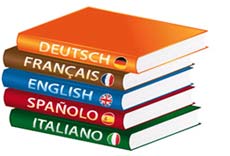- Availability
- Semester 1, Semester 2
- Credit Value
- 1.0
This course focuses on travel and tourism as the vehicle for studying selected world regions. Using a variety of geotechnologies and inquiry and communication methods, students will conduct and present case studies that develop their understanding of the unique characteristics of selected world regions; the environmental, cultural, economic, and political factors that influence travel and tourism; and the impact of the travel industry on communities and environments around the world.
Unit 1: Understanding Travel and Tourism
 Starting with a better understanding of the terms “tourist” and “travel”, you will learn the basics of the travel industry in this first Unit. There are a number of key concepts and world factors that impact travel and the choices people make about travelling. What is it that draws people to certain locations and keeps them away from others? This course is also about the regions of the world – how do you define a region? What makes regions different from one another? The most important idea in this unit is that there is interconnectedness between regions.
Starting with a better understanding of the terms “tourist” and “travel”, you will learn the basics of the travel industry in this first Unit. There are a number of key concepts and world factors that impact travel and the choices people make about travelling. What is it that draws people to certain locations and keeps them away from others? This course is also about the regions of the world – how do you define a region? What makes regions different from one another? The most important idea in this unit is that there is interconnectedness between regions.
Unit 2: Tourism and the Economy
This unit focuses on the economic development and impacts of travel and tourism on world regions. Students analyze the economic effects associated with economic disparities, travel balances and political policies that affect specifically tourism. They compare tourism characteristics of two city-centred regions (New York vs. Rio de Janeiro). They also look at how advertising and marketing effect tourism levels in Canada and create their own advertisement for Canada’s attractions.
Unit 3: Tourism and Culture
 This unit explores various themes of cultural tourism. Students begin by familiarizing themselves with the various terms that are related to cultural tourism. Religious, sports and aboriginal cultural destinations will be investigated to see what cultural aspects invite tourists to these significant areas. Changing lifestyles of tourists and changes in tourist trends will be studied to see their affect on various cultures. You will also suggest solutions to the impact of tourists on a cultural destination. Finally, you will investigate a significant Canadian cultural site and propose why it should be a World Heritage Site.
This unit explores various themes of cultural tourism. Students begin by familiarizing themselves with the various terms that are related to cultural tourism. Religious, sports and aboriginal cultural destinations will be investigated to see what cultural aspects invite tourists to these significant areas. Changing lifestyles of tourists and changes in tourist trends will be studied to see their affect on various cultures. You will also suggest solutions to the impact of tourists on a cultural destination. Finally, you will investigate a significant Canadian cultural site and propose why it should be a World Heritage Site.
Unit 4: Tourism and the Environment
 This unit applies the geographic knowledge and skills developed in Unit 1 to a focus on the effects of travel and tourism activities on the natural environment. After identifying the natural resources that attract tourists, students direct their inquiries to how natural factors (hurricanes, tsunamis, tornadoes and earthquakes) affect tourism and, conversely, how tourism activities alter the natural environment – particularly in sensitive environmental habitats such as the rainforest, desert, mountain, and aquatic regions. Finally, students examine how world organizations are working toward sustainable development and stewardship of natural environments.
This unit applies the geographic knowledge and skills developed in Unit 1 to a focus on the effects of travel and tourism activities on the natural environment. After identifying the natural resources that attract tourists, students direct their inquiries to how natural factors (hurricanes, tsunamis, tornadoes and earthquakes) affect tourism and, conversely, how tourism activities alter the natural environment – particularly in sensitive environmental habitats such as the rainforest, desert, mountain, and aquatic regions. Finally, students examine how world organizations are working toward sustainable development and stewardship of natural environments.
Unit 5: Future of Tourism
 In this unit, students examine their local area to discover and predict the future of tourism locally. Students will expand on the concepts of “regions” and develop a plan for the future of tourism. By looking at tourism through the eyes of a developer, students can determine what the sites around them might look like in 20 years, what global sites may look like and, perhaps, what could happen in inter-stellar tourism – a trend that has already begun!
In this unit, students examine their local area to discover and predict the future of tourism locally. Students will expand on the concepts of “regions” and develop a plan for the future of tourism. By looking at tourism through the eyes of a developer, students can determine what the sites around them might look like in 20 years, what global sites may look like and, perhaps, what could happen in inter-stellar tourism – a trend that has already begun!
Unit 6: Culminating Activity
Students must complete the course culminating task, “The Travel and Tourism Report: A Case Study,” to meet the expectations and requirements of Regional Geography: Travel and Tourism, CGG3O. This report is worth 30% of the final course evaluation. The collection of data and the report will be assessed using a rubric.
